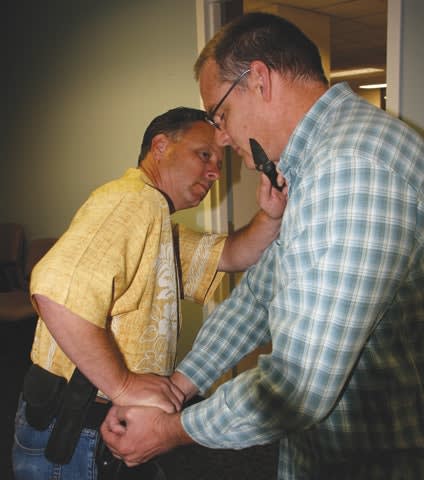Horizontal slashing attacks above and below the knee can cause injury to the quadriceps (above knee) and patellar (below knee) tendons. Damage to these tendons will reduce overall leg strength, limit the ability to straighten the legs, and prevent the suspect from standing.
Finally, there are the feet. Edged weapon attacks on the feet can be very painful. The bones of the feet are delicate and numerous nerves are concentrated in this area. Attacks to the foot and tendons may be prevented by wearing high top shoes or boots. Vertical stabbing to the top of the foot will cause pain, but little blood loss. If the suspect is wearing low shoes or is barefoot, the Achilles tendon—the strongest and thickest tendon in the body—is easily accessible. Severing this tendon will prevent the suspect from standing on the toes, walking, running, or jumping.
This article is based on human anatomy and shows you how to disrupt some of the basic inner workings of that system. These techniques are brutal and may cause permanent damage, disfigurement, or death to your opponent. The potential results of your actions must be considered by the individual officer prior to using any of these techniques.
With all deadly force encounter training, use extreme caution when practicing the methods and techniques addressed in this article. Prior to implementing these techniques, check to make sure your local laws, department policies, and use-of-force protocols allow for such techniques.
Douglas Iketani is a deputy sheriff with 18 years of law enforcement experience. A department use-of-force instructor, he is currently assigned to the Office of Homeland Security as a Technical Schools Instructor.












